Guided Tour of Jeonju Hanok Village
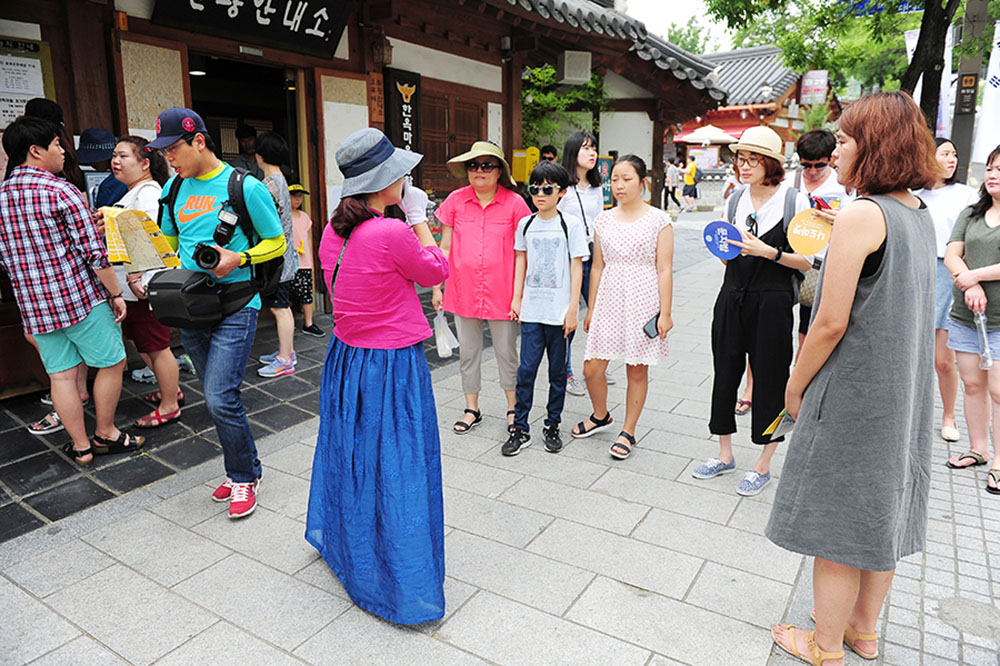
Jeonju Hanok Village, famous for local gourmet restaurants and cultural attractions, is drawing more visitors every year. However, most of the visitors seem to visit here to enjoy the food and culture, rather than getting to know the Hanok Village itself.
This is regrettable, because the Hanok Village itself is filled with rich historical heritages. To make your visit to Jeonju more constructive, in this post, I will introduce you to the guided tour of the Hanok Village.
In the guided tour, a professional guide will take you on a tour of major historical and cultural spots in the Hanok Village. You can choose from two different tour routes and the tours are “free.” Each tour is conducted as set out in below.
Course 1 (takes around an hour and a half) (Tour starts: Wednesday and Friday 3PM / Saturday 11AM / Sunday and Public Holiday 10AM and 3PM)
Omokdae Tourist Information Center → Jeonju Traditional Hanji Center → Yeomyeong Camera Museum → Seounggwangjae → Jeonju Traditional Wine Museum → Sori Culture Center → alley (Kumgil) → 600 year old Gingko Tree → Fan Culture Center → Choi Myung Hee Literary Museum
Course 2 (takes around an hour and a half) (Tour starts: Monday, Tuesday, and Thursday 3PM / Saturday 10AM and 3PM / Sunday and Public Holiday 11AM)
Omokdae Tourist Information Center → Omokdae Pavilion → Dongheon (Jeonju Traditional Culture Training Institute) → Jeonju Hyanggyo → Wanpanbon Culture Center → Hanbyukru Pavilion → Gangam Calligraphy Museum → Namchungyo Bridge
The guided tour starts at the Omokdae Tourist Information Center. If you wait under the pavilion in front of the information center, a lovely lady in Hanbok will announce the start of the tour.
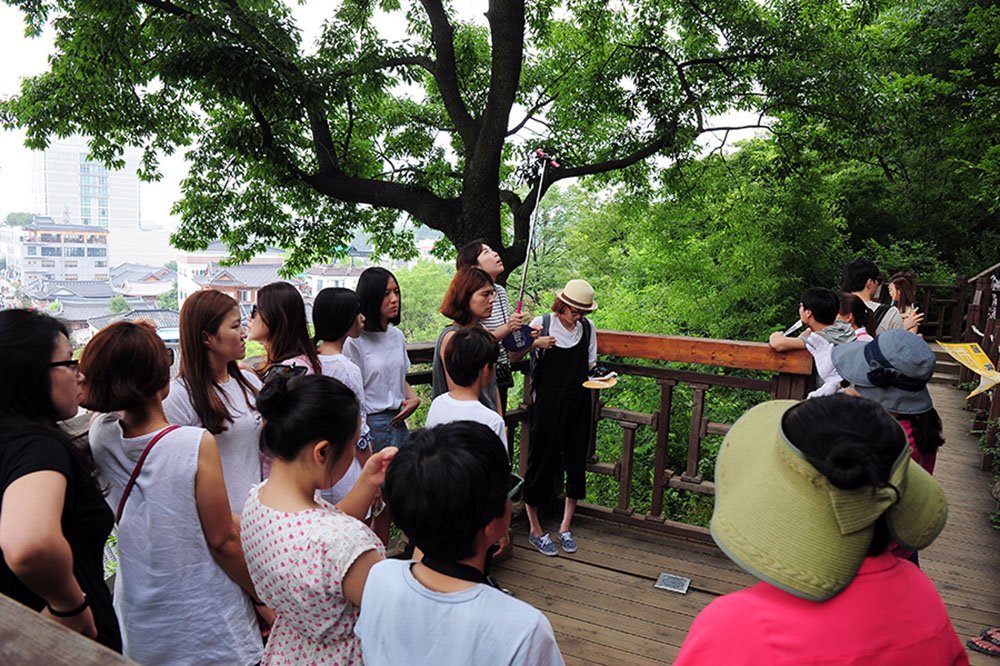
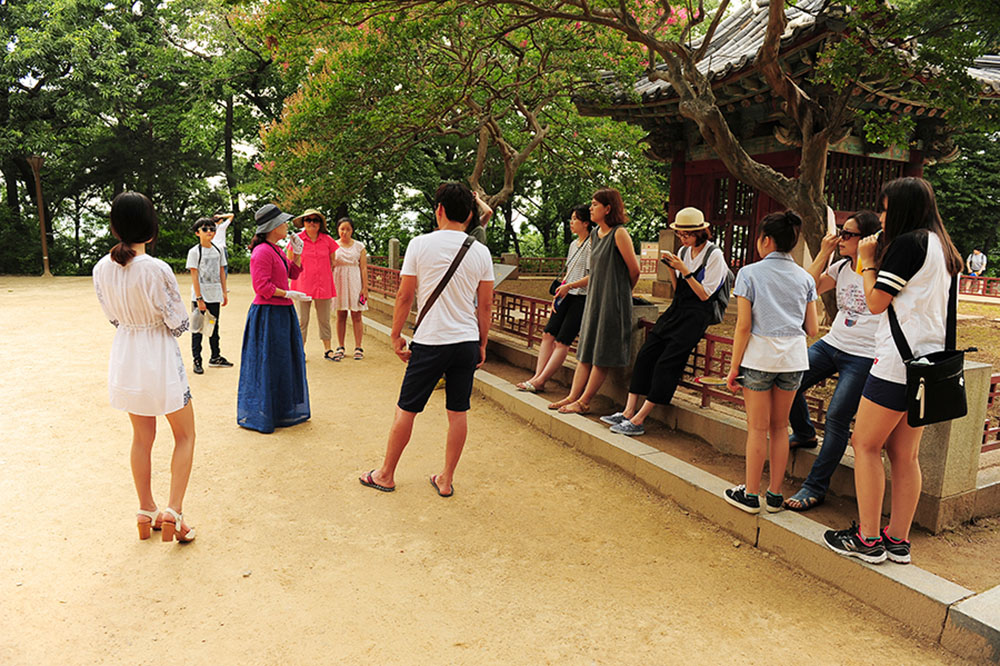
Make sure that you be there on time for the guided tour, because the tour starts without a head counting. If you want to organise a reserved tour for a group, please contact the tourist information center beforehand.
I took the tour Course 2, which starts at the Omokdae Pavilion and ends at the Namchungyo Bridge.
On the way to the Omokdae Pavilion, the guide explained the history of Jeonju Hanok Village and the pavilion. The pavilion was built by Taejo Yi Sunggye, the founder of the Joseon Dynasty, to celebrate his victory over battle against an army of Japanese pirates.
In the past, I thought the Omokdae Pavilion was just a view point. But after listening to the guide, the pavilion seemed quite different.
More people were joining the tour at the pavilion to listen to the guide. The tour eventually ended up with more people than when it started.
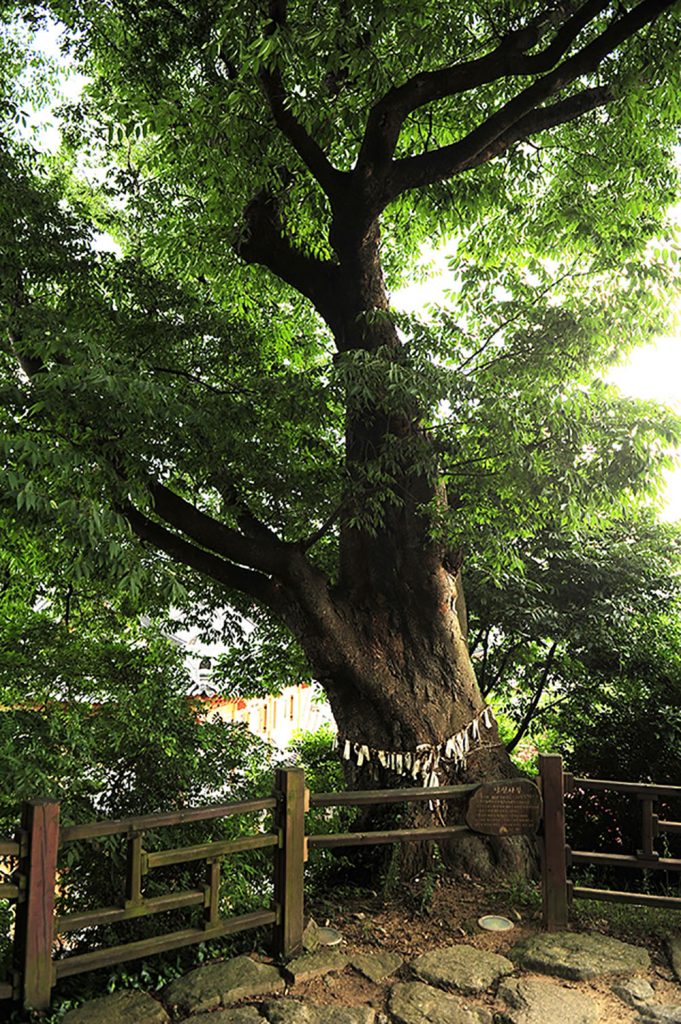
The next stop was a 600-year-old gingko tree. The tree has long been considered sacred as the dwelling place of the local guardian spirit. The city tried to cut down the tree in the course of modernizing the Hanok Village, but had to face strong resistance of the local villagers. Now the tree stands as a symbol of the protection of local tradition and culture.
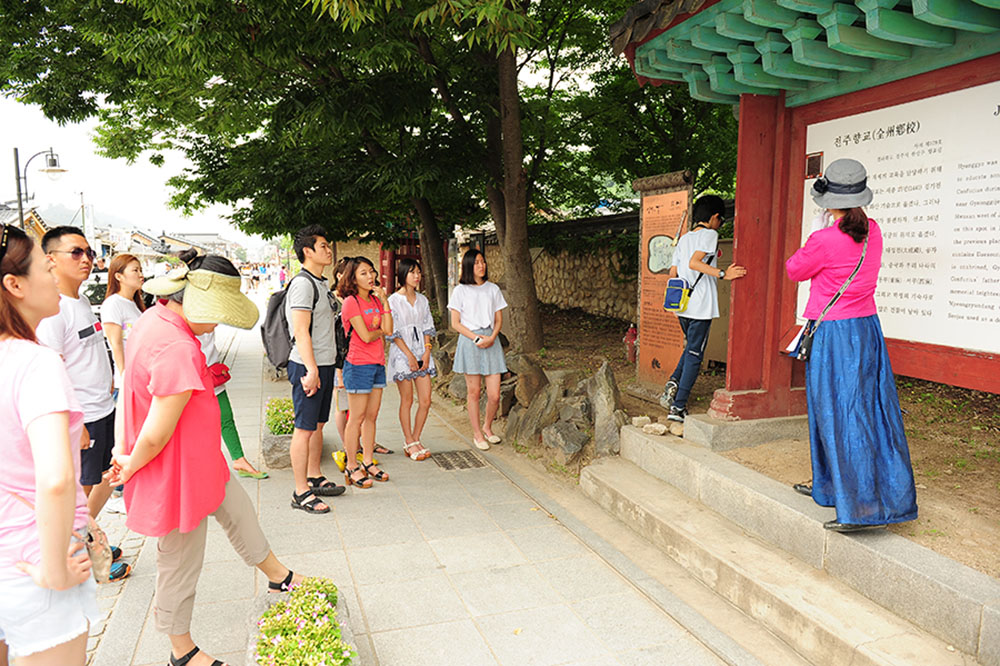
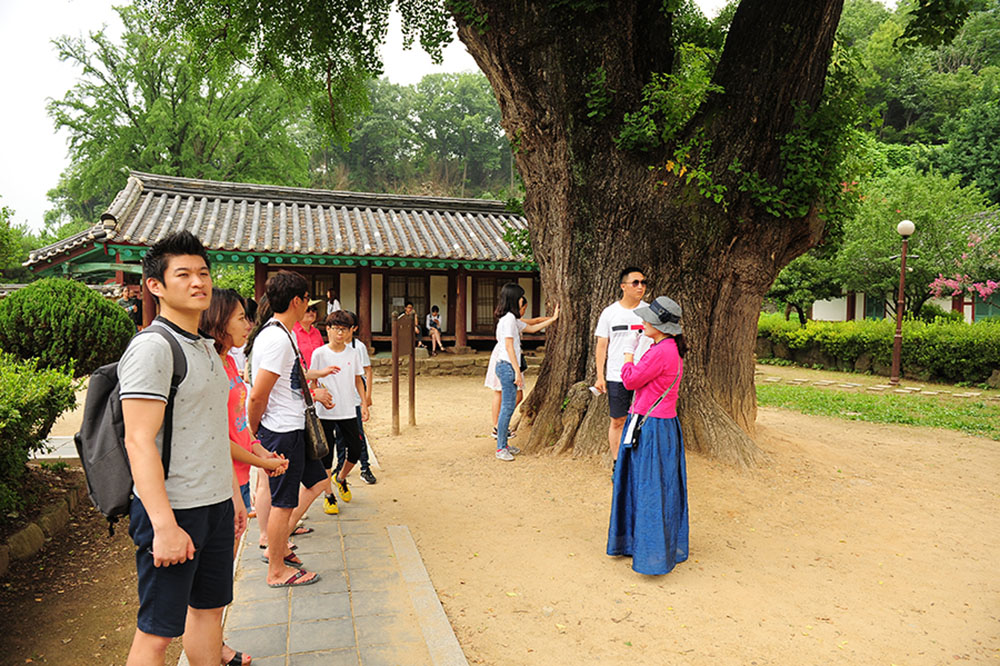
The tour couldn’t enter the Jeonju Traditional Culture Training Institute, because an actual training was underway when the tour visited and we couldn’t bother the class.
The next stop was Jeonju Hyanggyo. A hyanggyo is the Joseon Dynasty’s local Confucian school. I learned that during the Japanese Colonial era, the locals prevented the mortuary tablets of Confucian saints from being used as firewood.
Inside Jeonju Hyanggyo is a famous huge tree that appeared in the popular soap opera ‘Sunggyunkwan Scandal.’
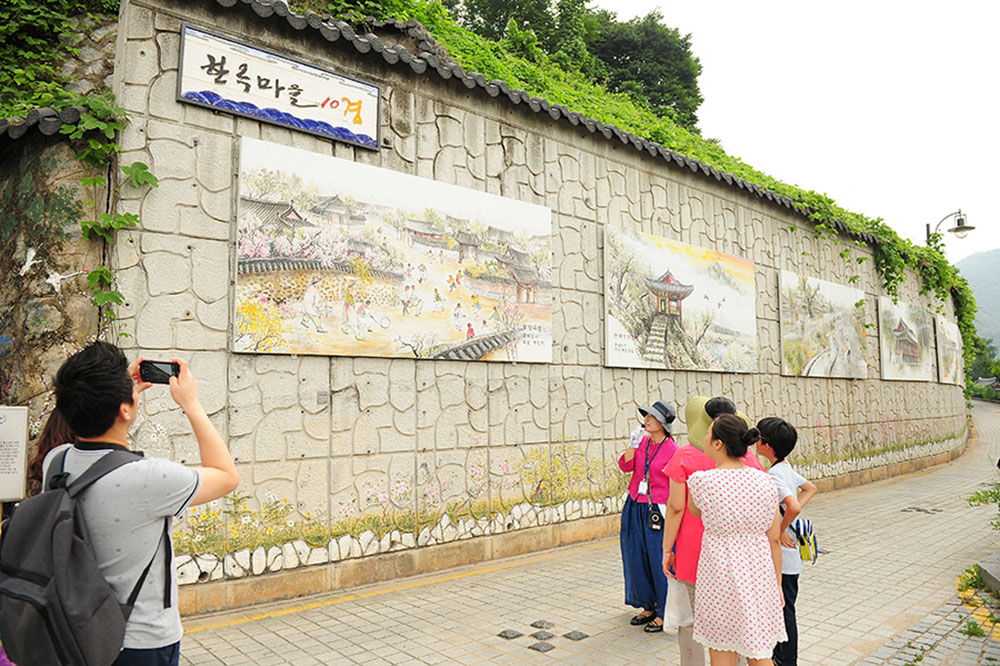
At the alleyway gallery, the guide explained what are the ten beautiful sceneries of the Hanok Village. They are as follows:
- The moon rising over the Kirin-bong mountain
- The sound of bell at the Namgosa Temple in the evening
- The fog surrounding the Hanbyukdang Pavilion
- Numerous legends and folk tales of Jaman-dong Village
- The moon floating along the Namchun Stream to the west
- The sound of wind at the Omokdae Pavilion
- Stepping over the snow piled over the courtyard of the Gyeonggijeon Palace
- The sound of raindrops falling from the eaves of the Jeonju Hyanggyo
- Clear stream flowing along the Eunhaeng-ro Street
- The stories of everyday lives at all corners of the village alleyways
As I listened to the history of the local publishing at the Wanpanbon Culture Center and enjoyed cool breeze at the Hanbyukru Pavilion, the guided tour was nearing its end. In the past, I visited the Hanok Village for just fun, but through the guided tour, I learned a great deal about the rich history of the Hanok Village.
I had an opportunity to talk to the guide. She lived in Seoul before moving to Jeonju after getting married. She liked the city very much that she took up the guide job. Since she seemed to know so much about the Hanok Village and its history, I asked her if she studied these things on her own. She told me that the Hanok Village and the city of Jeonju are very rich with history and culture that she is still studying when available.
This is it for the guided tour of the Hanok Village. If you want to get to know the village better, I highly recommend taking the guided tour. Above all, it’s free of charge.
-
Jill Schilling

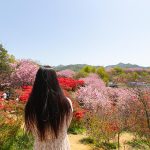
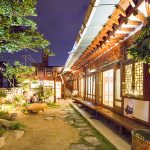

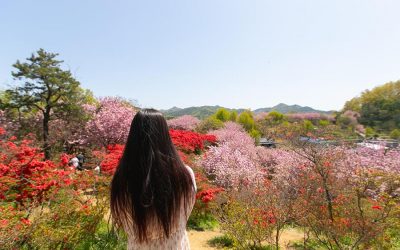


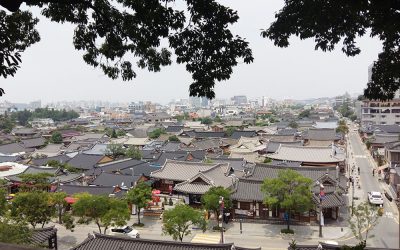
Recent Comments